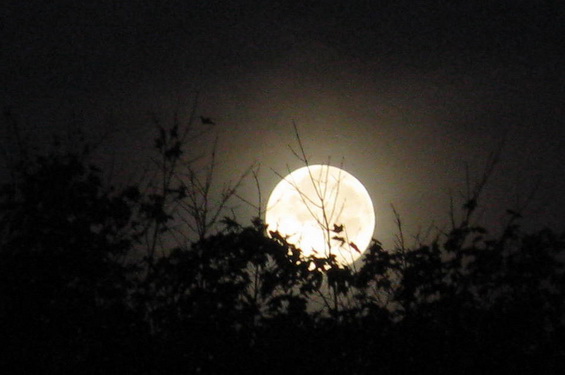
Revlon executives say their products cannot conceal the horrors inside of you.
Asserting that makeup can do little beyond creating a fleeting illusion of youth and beauty, cosmetics giant Revlon launched a new series of ads this week aimed at reminding its customers they will never be able to change what they are.
The company’s “You Are What You Are” campaign, which debuted with dark and haunting multi-page spreads in several major fashion magazines, cautions consumers that, at best, makeup is a sad disguise people hide behind in a futile attempt to avoid uncomfortable facts about their true nature.
“With our new ad campaign, we want to emphasize that you can buy all the lotions, powders, and fragrances you want, but you can’t escape who you really are: a fragile, flawed, and ultimately insignificant being who is tormented by fear and insecurity,” Revlon vice president Vivian Falk said in a press release introducing the advertisements. “It’s fine to use our products if they make you feel a little more attractive, but just remember it’s only a temporary distraction from the terrifying reality of your barren, unfulfilling life.”
“Your existence is a dismal and feeble one, and no amount of mascara is ever going to change that,” Falk added.
According to Revlon officials, the new campaign will include a mix of ruthlessly honest television spots, glossy print ads, and in-store promotions that encourage women to resign themselves to the bleak nature of their own humanity. In addition, billboards in major cities across America will reportedly feature images of a woman applying lipstick alongside the Revlon logo and a bold-faced slogan that simply reads, “You are living a lie.”
Company representatives further revealed that a new 60-second TV commercial would star a visibly distressed actress who scrutinizes her sallow and tear-streaked reflection in disgust before screaming and smashing the mirror with her fist, a sequence intended to highlight the unglamorous and excruciating character of all existence. An emotionless, monotone voice-over conveys the devastating psychological toll of coming to terms with one’s identity, saying, “Look at yourself: weak, afraid, all alone in this world. Everyone sees through you. Only death awaits. Revlon.”
“If you’re disappointed by what you see on the outside, just imagine how horrifying you must be on the inside – that’s the message we’re trying to convey to our customers,” said Revlon president Lorenzo Delpani, stressing that all of us are born into a terrible nightmare of tortured consciousness, a condition that he told reporters is unfortunately as immutable as it is meaningless. “You can try to obscure it all beneath lip liner and eye shadow and bronzer, but at the end of the day, you’re going to have to wash it off, and then what’s left? It’s just you, staring back at a grotesque, aging nothing consumed by doubt and regret who has made no meaningful contributions to the world.”
Delpani added, “You can conceal crow’s feet, but you can never conceal the appalling reality that is yourself.”
Though emphasizing that the campaign’s primary purpose is to disabuse women of the notion they can hide from themselves anywhere in this harsh world – let alone behind endless applications of skin and hair care products – Revlon executives said they hope the ads also spur young women to think critically about the potential for true self-discovery.
“Even if you could strip away all the duplicity and the self-deception, you might discover the person you imagined was there doesn’t even exist,” longtime Revlon chairman Ronald Perelman told reporters. “That’s what happens when you spend your life cowering in fear under a layer of foundation you thought could mask your insecurities forever. When you peel away the lies and expose the real you underneath, you’re going to be sickened by what you find.”
“And it’s too late to do anything about it,” he added. “Far too late.”













 Swami Chaitanya Keerti, editor of
Swami Chaitanya Keerti, editor of 

 Ma Prem Naina born in Jorhat, Assam, was initiated into Sannyas in 2003 at Oshodham, New Delhi. She is an MBA and also holds a Master’s degree in Mass Communication. Deeply inspired by the love and dedication of the founder of the Osho World Foundation in Delhi, Swami Om Prakash Saraswati, she left her career as a producer/journalist to join in Osho’s caravanserai. She presently heads the publications and media relations at Osho World Foundation, New Delhi. www.oshoworld.com
Ma Prem Naina born in Jorhat, Assam, was initiated into Sannyas in 2003 at Oshodham, New Delhi. She is an MBA and also holds a Master’s degree in Mass Communication. Deeply inspired by the love and dedication of the founder of the Osho World Foundation in Delhi, Swami Om Prakash Saraswati, she left her career as a producer/journalist to join in Osho’s caravanserai. She presently heads the publications and media relations at Osho World Foundation, New Delhi. www.oshoworld.com



 Creativity: Unleashing the Forces Within
Creativity: Unleashing the Forces Within 

 Title: New Dimensions of Yoga
Title: New Dimensions of Yoga Title: Nowhere To Go But In
Title: Nowhere To Go But In






